- Home
- James A. Michener
Presidential Lottery Page 6
Presidential Lottery Read online
Page 6
RESOLVED, That one Elector of this College be appointed by the President to take in charge one of the packages containing one list of the Electors originally elected, one certificate of the election filling vacancies in the Electoral College, if any, and one certificate of the votes cast for the offices of President and Vice-President of the United States, and forward the same by Registered Mail through the Postmaster at the City of Harrisburg, Pennsylvania, to the Honorable Michael H. Sheridan, United States District Court, Scranton, Chief Judge of the District Court of the United States for the Middle District of Pennsylvania.
It had been found to be a good idea for one set of the records to be turned over to a judge who presumably could be trusted.
When the scratching of the pens had ended, when Emma Guffey Miller’s powerful voice echoed across the gilded chamber, “When are we going to eat?” and when our work had been legally sealed into bundles for transmittal to the proper authorities, I banged the gavel and announced that Pennsylvania’s Electoral College was adjourned, sine die, and as I left the rostrum I uttered a quiet prayer of thanks that this day had passed so uneventfully, when it could have been so destructive.
We had not yet left the capitol before a newsman advised us that in North Carolina the Republican elector, Dr. Lloyd W. Bailey, of Rocky Mount—who had said that he was proud of his membership in the right-wing John Birch Society—had arbitrarily refused to vote for Nixon and had voted for Wallace instead. Even without the pressures of an inconclusive election, one of the Nixon votes had defected; with the pressures that I have been describing, many more Republican votes would have vanished. The Democrats, too, suffered. In Michigan the former state chairman of the party, Zolton Ferency, refused as a matter of principle to cast his pledged vote for Humphrey; in this case he did not vote for someone else but resigned from the College so that a substitute chosen on the spot could vote for Humphrey. Again, the intense battles that I have been referring to had not developed, but already there was arbitrary action. Is any further proof needed for the condemnation of this system?
Furthermore, if the election had been thrown into the House, do you suppose for one moment that our Representatives, who are only electors made large, would have been immune to the extreme pressures that would have been generated, when one man’s vote could determine the vote of an entire state, or perhaps the nation? There would have been a shambles beyond description. There was in the past and there would be in the future. Contemplating such an election in the House, a senior officer of that body said, “I hope to God I never see the day.”
III
HOW THE SYSTEM GREW
In contemplating electoral reform and in trying to decide what pattern it should take, two definitions must be kept in mind. The United States functions under an electoral system, which has many good features; this system operates through an Electoral College, which has none. The definitions which I shall use follow:
Electoral system. A compromise plan worked out by the Founding Fathers in which the rights of large and small states are equally protected. It consists of five main features. (1) Election of the President shall not be by popular vote but by electoral. (2) Each state regardless of size shall have two electoral votes corresponding to its two senators, a protection to the small. (3) Each state shall also have one elector for each representative to which it is entitled in Congress, a protection to the large. (4) To be elected, a candidate must win a majority of the electoral vote. (5) Inconclusive elections are thrown into the House.
Electoral College. This phrase appears nowhere in the Constitution nor in any enabling legislation. It thus has no legal force and is merely a convenient mode of describing the electors when considered as a group. The exact meaning of the phrase is undetermined, for no one knows whether it signifies one of the fifty-one groups who assemble at each state capitol and the District of Columbia or the total body of 538 which never meets as a unit anywhere at any time. In popular usage, the phrase applies to the whole body of electors, who in normal elections serve only a ritual function; in emergencies, a vital one.
This essay argues that in the electoral system there is much worth salvaging; in the Electoral College, nothing. Therefore I shall pay most attention to the derivation of the former.
GENESIS OF THE ELECTORAL SYSTEM
When the Constitutional Convention assembled in Philadelphia in 1787, scant support was found for the election of the President by popular vote. (In this discussion I shall not mention the Vice-President. As Hugh Williamson of North Carolina explained in debate, “Such an officer as the Vice-President was not wanted. He was introduced only for the sake of a valuable mode of election which required two be chosen at the same time.”)
The chief proponent of a popular vote was James Wilson of Pennsylvania, who argued that the President, the Senate, and the House should be elected by direct vote of the people so as to make them as independent as possible of each other. He was supported by Gouverneur Morris, also of Pennsylvania, who uttered the classic phrase, “If the President is to be the guardian of the people, let him be appointed by the people.” James Madison of Virginia gave his grudging assent, pointing out that all proposed systems had defects but this seemed the best, since the President was to act for the people, and not the states.
Opponents of a direct popular vote were relentless in their attack on the plan, pointing out the defects which made it suspect in that age. Elbridge Gerry of Massachusetts, who in the end would refuse to sign the completed Constitution and would campaign against its ratification because it did not square with his ideas of theoretical republicanism nor provide sufficient safeguards against democracy, argued, “The people are uninformed and would be misled by a few designing men.” Popular voting, he said, was radically vicious.
When the convention finally voted on the plan, the count was 2 to 9 against, with only Pennsylvania and Delaware in favor.
The proposal that elicited most support was one calling for Congress to elect the President. So many delegates and states considered this the only practical plan that it was generally supposed to prevail, and in four separate votes it did; it also appeared in the provisional draft of final recommendations and was about as close to being finally adopted as a proposal could have been without becoming an official part of the Constitution.
Reasons adduced in favor were obvious: most of the states chose their governors by this system; the Congress, being “the depository of the supreme will of the society,” ought naturally to appoint the executive, who would then be accountable to it; and the dangers of a popular vote of the people would be avoided.
Why did a plan so popular and so logical at that time finally fail when at one vote it passed unanimously, at another, 8 to 2, and again 7 to 4? It seems in retrospect that protracted debate, and especially the attacks by Gouverneur Morris and James Wilson, laid bare every weakness until in the end all saw that a President chosen by the Congress would perforce have to become subservient to Congress. One by one the defenders of such election drifted away and in the end a Committee of Eleven was appointed to arrange a compromise, but a last-ditch effort was made to force Congressional election onto the convention. This time it failed 2 to 8 and the concept was dead.
The Committee of Eleven was an able group representing all shades of political opinion in the convention, and it worked four days without interruption seeking a solution to the impasse. It decided early not to return either to direct popular election or to choice by Congress. The alternative that was finally chosen seems to have been voiced first by James Wilson, who had concluded, when his plan of direct voting was defeated, that intermediary electors might be the solution. At any rate, the committee reported to the floor the plan under which we operate today. The compromise was five-fold, as outlined earlier: electoral vote, not popular; two votes for senators; one for each representative; winner must have a majority; inconclusive elections to the House.
It was a brilliant compromise; not only was it the solution to the conven
tion impasse, later it would also aid conspicuously in obtaining from the states the ratification votes necessary to put the Constitution into operation. It was thus the rock of decision, the keystone without which all else would have been impossible, and it is enshrined in the success our nation has had in the difficult task of keeping a federal union of equals together and functioning. Technically the plan had many faults, as we shall see; philosophically it was impeccable.
In the public discussion of the proposed Constitution, and in the Federalist Papers which played so strong a role in winning support, there was surprisingly little discussion of the compromise method for electing a President. The Founding Fathers were well satisfied with themselves and felt that they had produced a system which would last indefinitely. It is true that in the final debates within the convention itself Madison had warned that election in the House carried certain built-in pitfalls, but corrections had been made to accommodate his sharpest criticisms and he did not publicly repeat his attack. Hamilton confidently assured the public, “The mode of appointment of the chief magistrate of the United States is almost the only part of the system, of any consequence, which has escaped without severe censure, or which has received the slightest mark of approbation from its opponents.”
I am surprised that this group of keen politicians and social philosophers should have failed to anticipate the two rocks on which their plan would founder. First, they did not foresee the rise of political parties or the way in which they would destroy the effectiveness of the electors. Second, they did not guess that election by the House would work so poorly. This blindness on the part of the best leadership this nation has ever produced should give one pause if he thinks that in the next few years our current leadership will be able to come up with corrections that will end past abuses without introducing new. There could well be unforeseen weaknesses in our plans that would produce results just as unexpected as those which overtook the first great plan.
DEVELOPMENT OF THE SYSTEM
If one looks at our first three Presidential elections, one might conclude that the electoral plan had worked as proposed. In 1789 the electors did meet in their own states, they did consider the great men of our nation, and they did settle upon George Washington, by a vote of 69 to 0. In 1792 they did the same, by a vote of 132 to 0. In 1796, when for the first time there was a real contest, the system still proved effective, for the electors met, studied the credentials of the grand figures still among them, and chose John Adams over Thomas Jefferson, by a vote of 71 to 68. It is true that factionalism and not philosophy dictated the choice between the two men, and it is also true that the debacle of 1800 was ominously presaged when certain leaders in Adams’ party entered into a cabal to give Thomas Pinckney of South Carolina the same number of votes as Adams, with the idea of making Pinckney President when the election went to the House. This was forestalled by the fact that Jefferson slipped into second position, thus eliminating Pinckney, but this produced its own unacceptable result: President Adams and Vice-President Jefferson were of different factions and not personally congenial.
The 1800 election magnified these weaknesses and proved certain aspects of the system were not only ineffective but also corrupting. Whereas Pinckney supporters in 1796 had lost in their gamble of forcing a tie vote which could have been used to deny Adams the Presidency, in 1800 Burr had engineered just such a vote and had nearly succeeded in this disreputable stratagem. Furthermore, when the brutal battle was over, Jefferson wound up with Burr as his Vice-President, a pairing that must have been intolerable to both men.
The principal reason the original electoral plan was producing so many unexpected results was that early in the life of our republic political parties emerged with an importance no one had foreseen, and electors quickly saw that if they consolidated their vote behind their party’s choice, they would gain a considerable advantage, and this they did. The splendid original concept of men of high principle convening to pass upon the credentials of those who might lead the nation had swiftly degenerated into the practical maneuver of party hacks meeting to confirm the choice their party had already made. As early as 1800 every elector but one cast a straight party vote.
The fact that a noble concept should have failed was not exceptional; the fact that the failure was not corrected was. The Twelfth Amendment did eliminate the chance of another Adams-Pinckney or Jefferson-Burr misunderstanding as to who was running for what, but it continued the office of elector—already discredited—and made no significant changes in the procedure by which the House voted for President, although it did allow a choice to be made from the three top candidates instead of two, as before.
Starting in 1796 three parallel lines of accidental development determined the character of our election system, and not one was a result of either constitutional amendment or Congressional law. The vital processes I now speak of were the result of custom. When occasionally they were reinforced by state law, the statutes were of the most diverse nature.
Election of the electors. Both the Constitution and the Twelfth Amendment leave the method of selecting electors to the judgment of the various states, and we have seen how varied that can be. At the start most states gave their legislatures the job of designating electors, but custom forced the rapid decline of this tradition. In 1800 ten states out of sixteen used that method; in 1824, six out of twenty-four; and by 1832 the practice had practically vanished, only South Carolina clinging to this concept through the election of 1860. (When Colorado was admitted to the union in 1876 she allowed her legislature to pick her electors, as did Florida in that same year, but these were curiosities to be quickly abandoned.) Custom had dictated a significant change in the system.
Observe that insofar as the Constitution is concerned, any state is free to distribute its electors among the various parties as it wishes; in the early elections, if a given state wanted to split its electoral vote between Federalists and Republican-Democrats it was free to do so, and many did. For example, in 1800 the Pennsylvania legislature designated eight electors for Jefferson and seven for Adams. As we shall see shortly, the concept that all of a state’s electoral votes must go to the candidate who wins a bare plurality of the popular vote is a later innovation without constitutional sponsorship.
Also, in the early years those few states which did elect their electors often used the district plan, rather than choosing the entire ticket at large. Of the five states that elected in 1800, two did so at large, three by district; in 1824 it was twelve at large, five by district; and in 1836, twenty-five at large, none by district. However, as late as 1892 the Democrats in Michigan, tired of seeing that state’s 14 electoral votes go automatically to the Republicans, forced through a measure which provided for district election, which produced the results they sought, Republicans 9 to Democrats 5; but the state quickly saw that by thus splitting its vote it was putting itself at a disadvantage compared to states which did not, and the experiment ended.
Electors bound to vote as their state voted. The custom developed in the late years of the eighteenth century, was ironbound by 1804 and has been recognized in various state laws, as we saw in the opening chapter. At this date, in only sixteen states and the District of Columbia does election law make it clear that the elector is expected to vote as his state voted. To cite only two such laws: Connecticut General Statutes, 1967 revision: “Each such elector shall cast his ballots for the candidates under whose name he ran on the official election ballot.” Nevada Revised Statutes, 1965: “The Presidential electors shall vote only for the nominees for President and Vice-President of the party that prevailed in this State in the preceding general election.” The nebulous value of such law has been demonstrated earlier.
Winner-take-all distribution of electoral votes. This is the most radical development within our electoral system and one that the framers of the Constitution seem not to have anticipated. Although there was much stated fear of domination by large states, the delegates did not foresee by what
a relatively simple tactic this was to come about. Originally it was intended that the prudent electors of a state with five votes might divide 3 to 2 or even 2–2–1. When the votes of these separate delegations—who were not allowed to meet in union—were counted in Congress some months later, the name of the next President would be known.
It did not take long for a large state to see that if it prevailed upon its electors to vote as a bloc, its leverage would be consolidated and magnified, which would be especially important if one of the candidates happened to be a resident of that state. Once one state made this discovery and acted upon it, all had to follow. By 1800 this principle was widely recognized; in 1804, of the ten states that chose electors by popular vote, seven allotted all their electors to the party that had won the election; in 1824 thirteen out of eighteen did so, and by 1836 it was a nationwide custom with few exceptions.
By 1836, therefore, the principal features of our haphazard system were determined and no changes have since occurred in the areas we have been discussing. Such amendments as we have had since the major revision provided by the Twelfth Amendment in 1804 have concerned other matters that required attention. The Seventeenth in 1913 stipulated the popular election of United States senators. The Nineteenth in 1920 gave the vote to women. The Twentieth in 1933 related to the terms of President and Vice-President and the convening of the incoming Congress. The Twenty-second in 1951 limited a President to two full terms. The Twenty-third in 1961 gave the District of Columbia electoral votes. The Twenty-fourth in 1964 barred poll taxes in federal elections. And the Twenty-fifth in 1967 clarified the question of Presidential succession and disability. But the fundamental electoral system was not affected by any of these. It is true that from time to time Congressional statute has clarified certain difficult technical points, and to see how this has occurred, let us look briefly at one election which produced reform.

 Mexico
Mexico The World Is My Home: A Memoir
The World Is My Home: A Memoir Sayonara
Sayonara Chesapeake
Chesapeake The Novel
The Novel Rascals in Paradise
Rascals in Paradise Return to Paradise
Return to Paradise Presidential Lottery: The Reckless Gamble in Our Electoral System
Presidential Lottery: The Reckless Gamble in Our Electoral System The Source
The Source Poland
Poland Space
Space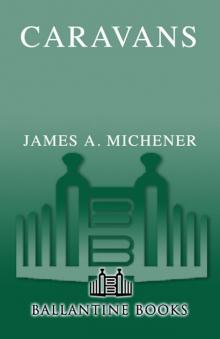 Caravans
Caravans Creatures of the Kingdom: Stories of Animals and Nature
Creatures of the Kingdom: Stories of Animals and Nature Iberia
Iberia Hawaii
Hawaii The Watermen: Selections From Chesapeake
The Watermen: Selections From Chesapeake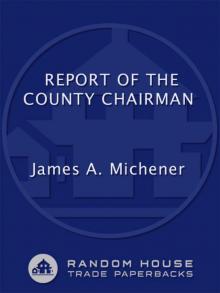 Report of the County Chairman
Report of the County Chairman The Covenant
The Covenant The Bridges at Toko-ri
The Bridges at Toko-ri Matecumbe
Matecumbe Journey: A Novel
Journey: A Novel Centennial
Centennial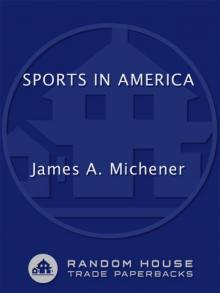 Sports in America
Sports in America Texas
Texas Miracle in Seville
Miracle in Seville This Noble Land: My Vision for America
This Noble Land: My Vision for America Tales of the South Pacific
Tales of the South Pacific Bridges at Toko-Ri
Bridges at Toko-Ri Space: A Novel
Space: A Novel Presidential Lottery
Presidential Lottery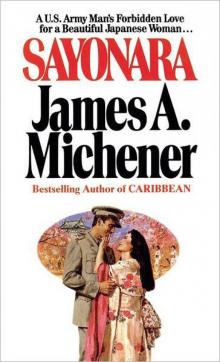 Sayonara: A Novel
Sayonara: A Novel This Noble Land
This Noble Land The Covenant: A Novel
The Covenant: A Novel Miracle in Seville: A Novel
Miracle in Seville: A Novel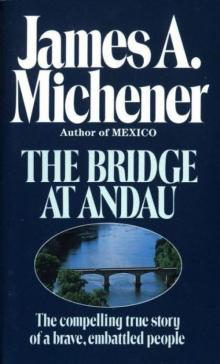 The Bridge at Andau
The Bridge at Andau Source
Source The Source: A Novel
The Source: A Novel Journey
Journey Recessional: A Novel
Recessional: A Novel Legacy: A Novel
Legacy: A Novel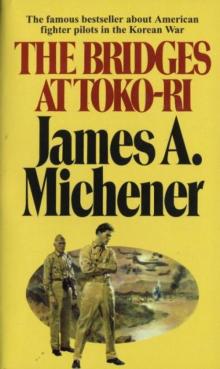 The Bridges at Toko-Ri: A Novel
The Bridges at Toko-Ri: A Novel Poland: A Novel
Poland: A Novel